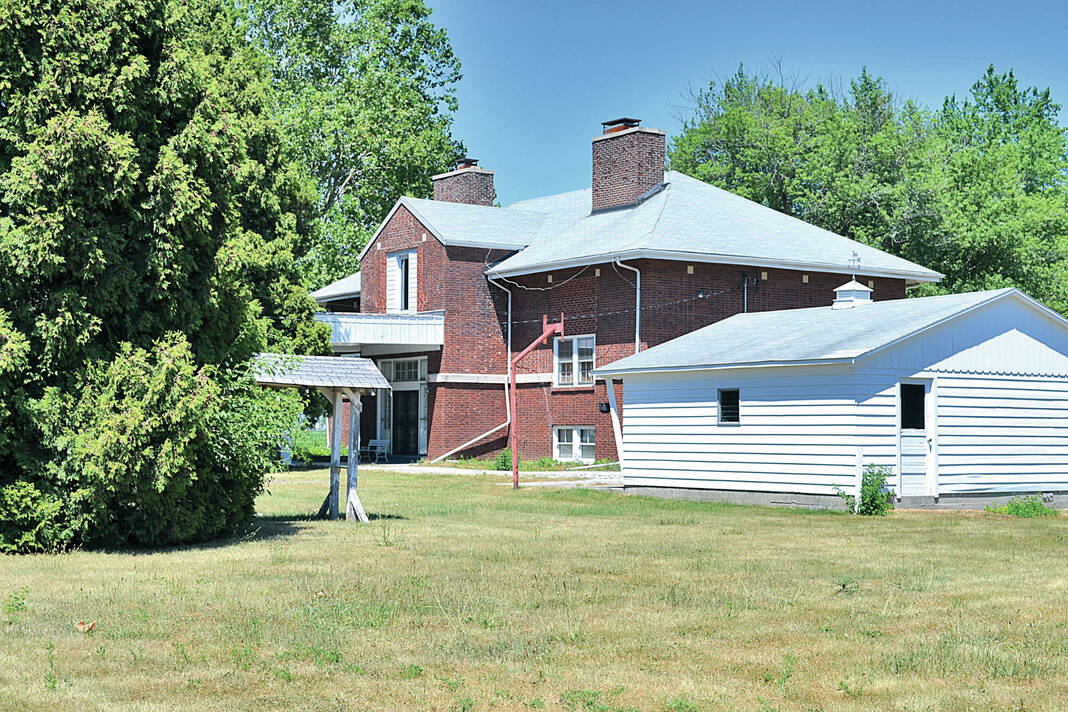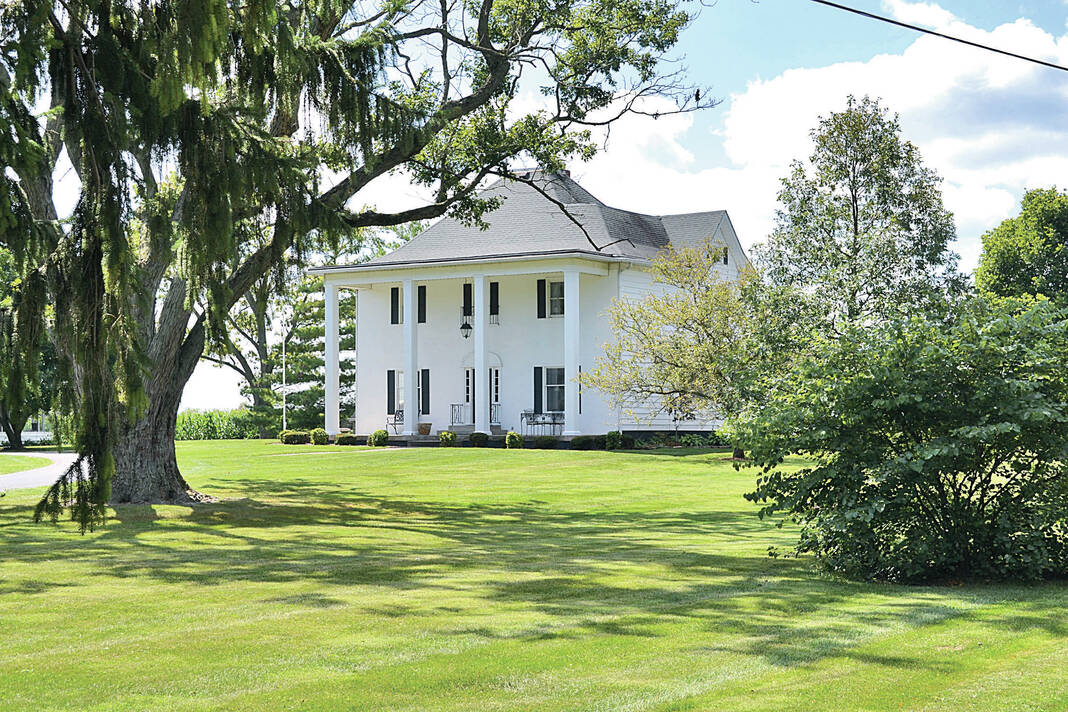
Stephen Jackson

Epworth School.
Submitted

Epworth Center.
Submitted
By Steve Jackson | For The Times-Post
Stony Creek Township was the last of the county’s fourteen townships to be organized on or about March 18, 1851.
Its name is taken from the creek by the same name that flows in a southwesterly direction across the township’s northwest corner.
The township name first appeared in the minutes of the commissioners’ court for March 1851, when an assistant appraiser of real estate was appointed to appraise some property in Stony Creek and three other townships.
Acknowledged as the first to settle in the future township were the Fisher brothers, John and his wife Barbara and Benjamin and his wife Hannah.
Traveling by ox-drawn wagon from Ohio, they arrived in the wilderness area in June 1820.
After selecting a suitable site, they cleared the land and erected log cabins near Stony Creek.
About three years later they were joined by D.E. Studley, Thomas Busby, John Anderson, George Reddick plus several others who all settled along the same creek near the present site of Fishersburg.
The first frame house in the area was built by a man named Rogers, who started the first blacksmith shop in that part of the county.
William and Benjamin Sylvester were the first merchants, opening their store in 1844.
Prior to the building of the railroad in 1876, the village of Fishersburg was the principal trading point for the western part of Stony Creek Township and large section of Hamilton County.
When the railroad was completed the town of Lapel, three-fourths of a mile southeast, sprang up, and being on the railroad drew a large part of the trade.
Records of land entries in the locality did not start until 1829.
However, by 1827 Fishersburg had made sufficient progress as a community to have a combined church and school.
On May 10, 1837, the Rev. Fletcher Tivis surveyed the site for the first town in the Stony Creek area.
The next month, and influenced by Benjamin Fisher’s son Charles, the U.S. Post Office opened a branch called Fishersburg with Daniel Huntzinger being appointed postmaster June 19, 1837.
The post office remained in operation until July 30 1904, when mail was sent to Durbin in Hamilton County.
Local histories assert that Rev. Tivis named it Fishersburg in honor of Benjamin Fisher who was killed at Strawtown by Indians in March 1821.
However, there are some members of the Fisher family who maintain that the town was named for Benjamin’s brother John Fisher who helped develop the area.
Originally the 28 square miles comprising the township were covered with a heavy forest growth and had to be cleared.
The heavy forestation is responsible for a rather unique place-name.
Dismal was the name of a section of dark swampland, which covered much of Stony Creek Township.
Tales about the swampland and what could be found there were abundant in earlier times.
Among the speculation was the possibility that dinosaurs had found a home in the wetlands.
But early settlers who drained the swamplands found no dinosaurs.
They did discover great expanses of farmland.
Although Fishersburg and Lapel were the only towns of importance in the township, two smaller communities flourished around churches that made their mark in the township’s history.
In 1839, Thomas Jefferson Davis purchased 320 acres in Madison County and moved his family from Fayette County, Indiana.
He and his sons erected a log house on what is now known as Lone Oak Road (CR 500W) near the intersection with present-day CR 100S (25th Street).
Around this log house his son Dr. Ball Davis built a frame house in 1877.
At one time, Ball Davis owned and farmed large acreages on all four corners.
A schoolhouse was erected on the southeast corner, and just east of it Mr. Davis built and operated for many years a drain tile factory.
Davis also constructed a church known as the Epworth Methodist Church.
The corner with the church and school became known as Epworth Corner.
Clustered around the intersection of CR 400W (Layton Road) and CR 200S (38th Street) was the second church-related community.
Bethel United Methodist Church located on the southwest corner of that intersection is the only reminder of the rural farming community that existed in the first decades of the 20th Century known as Bethel.
Russell Bower grew up on the family farm three-quarters of a mile north of the church.
He attended the Epworth Grade School one mile west of his home.
In the fall of 1920 he began a daily four-mile bicycle ride to Anderson High School.
The arrival of the Lebanon & St. Louis Railroad in Stony Creek Township gave birth to more place-names each one spaced exactly one mile apart along the railroad from CR 500W to CR 700W.
Bloomer was named for early settler August Bloomer and was located where the railroad crosses the Lone Oak Road (CR 500W).
It was a revenue stop (income realized) on the railroad, and later home to a tile factory and then a cannery.
Crossley Station was another name for Bloomer.
To the northwest of the intersection of the Lone Oak Road and railroad is what remains of the old Foland Cannery.
This was once a flourishing tile factory, also established by Dr. Ball Davis, sometime around 1880 and which operated for half a century.
Clay was obtained from a considerable area around the old plant.
One mile to the west on the railroad where CR 600W crosses was Johnson’s Crossing.
There was also a grocery at this location with a post office.
It was named for John L. Johnson the first postmaster who was appointed Feb. 25, 1878.
This stop operated until Oct. 15, 1901, when the area’s mail service moved to Lapel.
And finally, one mile further west where CR 700W crossed the railroad was Graber’s Station named for Post Master Marion Graber.
It was the site of the old DeLawter sawmill, which supplied dimension timber and siding for a number of houses built in Park Place after the old iron bridge to the former Johnstown was opened in 1887.
A post office called Bruin was established there March 6, 1878, with Graber as its only postmaster until the office closed Sept. 15, 1884.
Madison County Historian Stephen Jackson is leading a series of “First Sunday” presentations covering the History of Madison County townships. The talks are set for 2 p.m. on the first Sunday each month in the Bowman Room at Museum of Madison County History, 11 W. 11th St., Anderson. The talks began Sept. 4, 2022, and run through Nov. 5. The information he prepares for those presentations form the basis of this series of columns in The Times-Post.